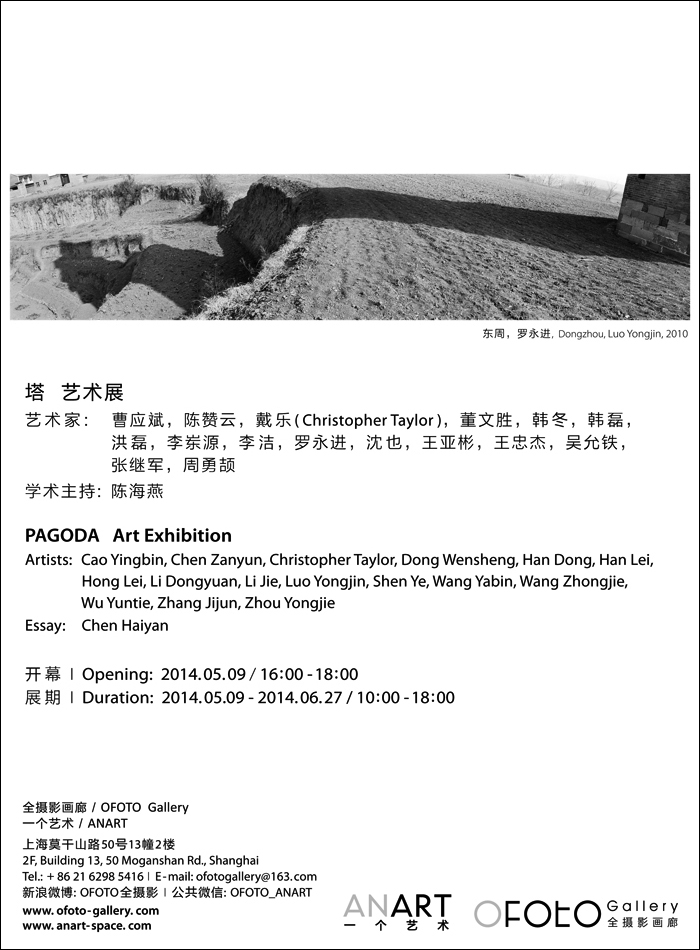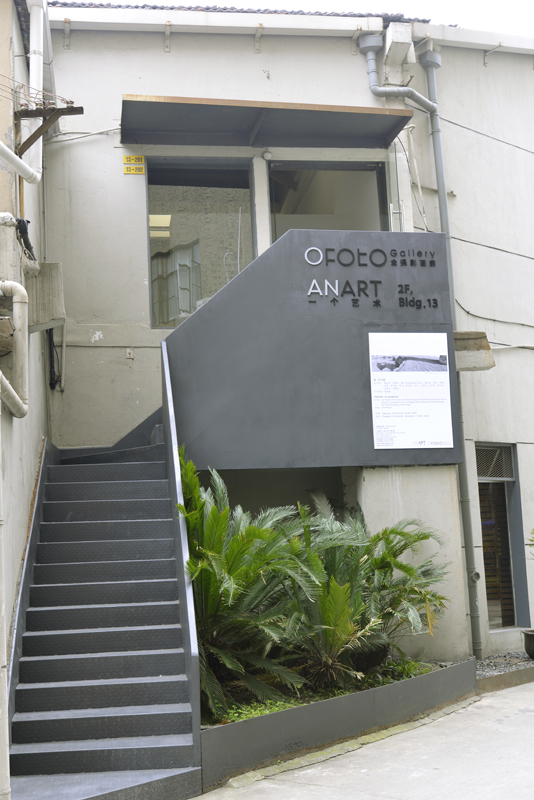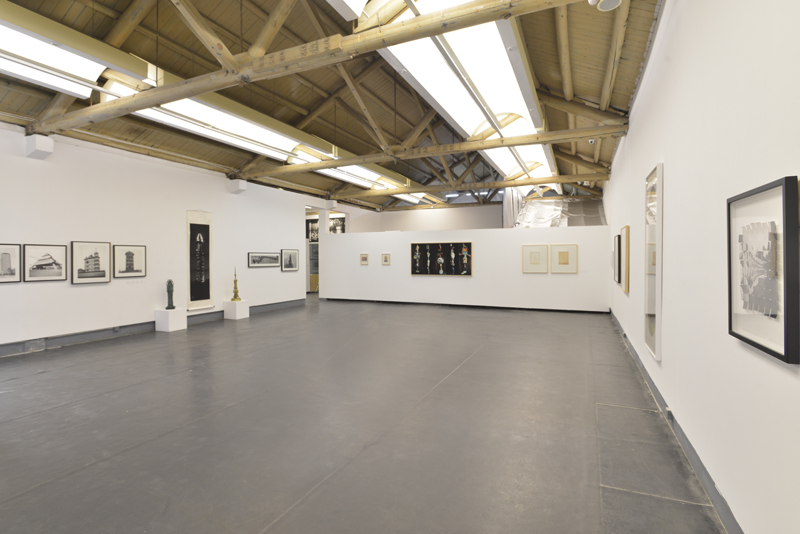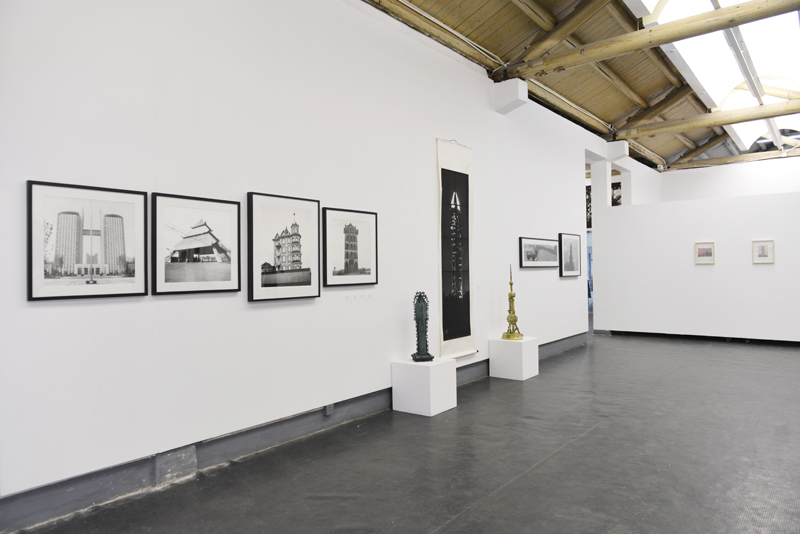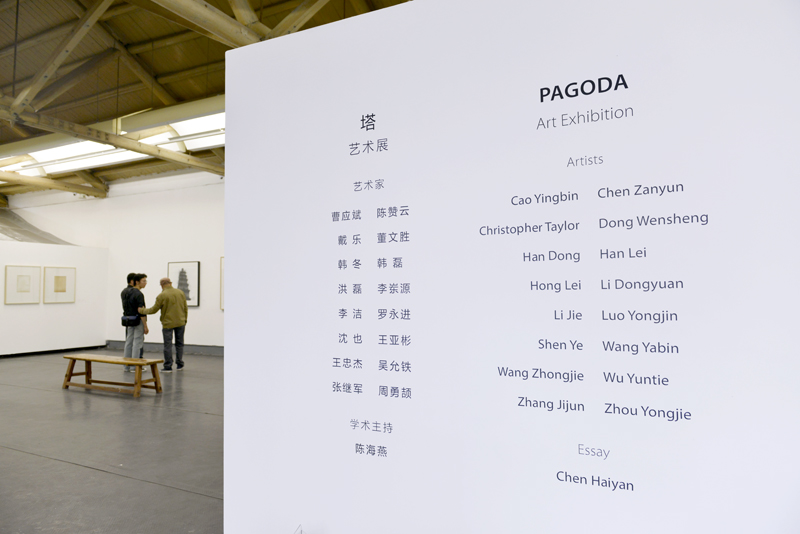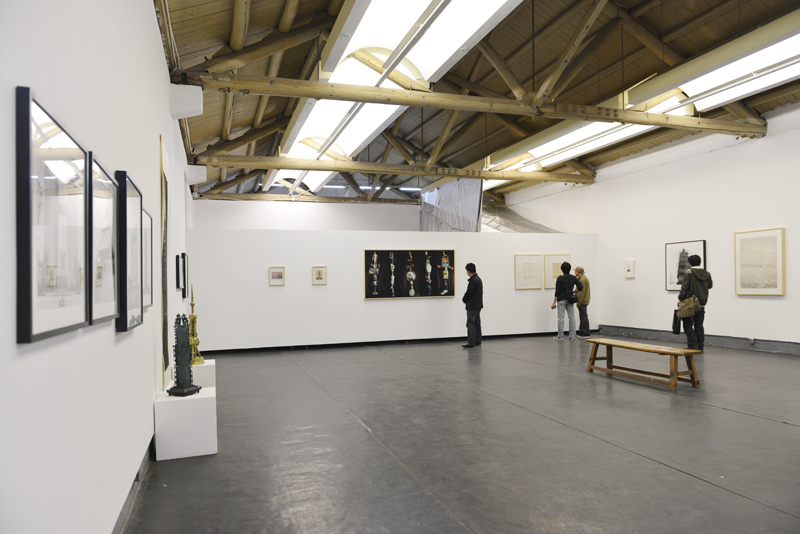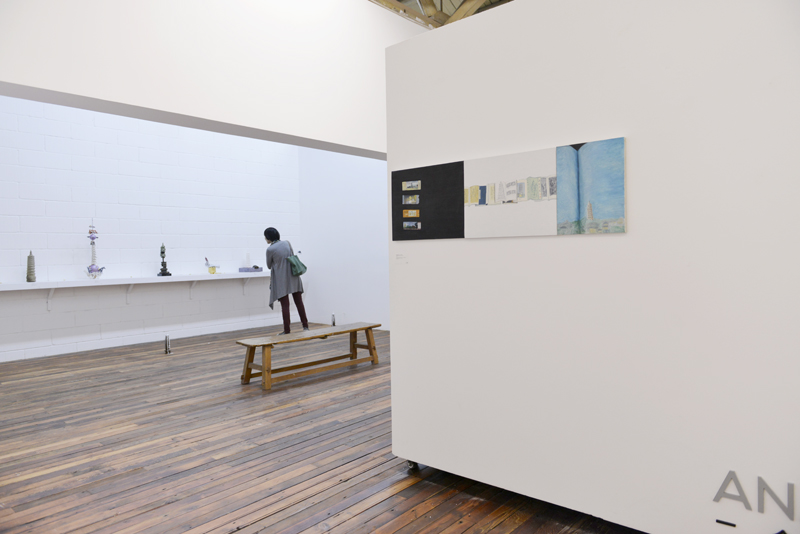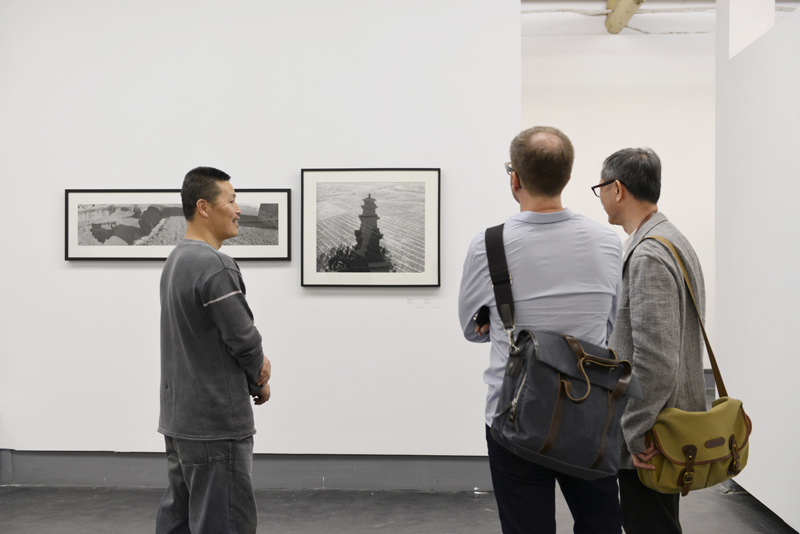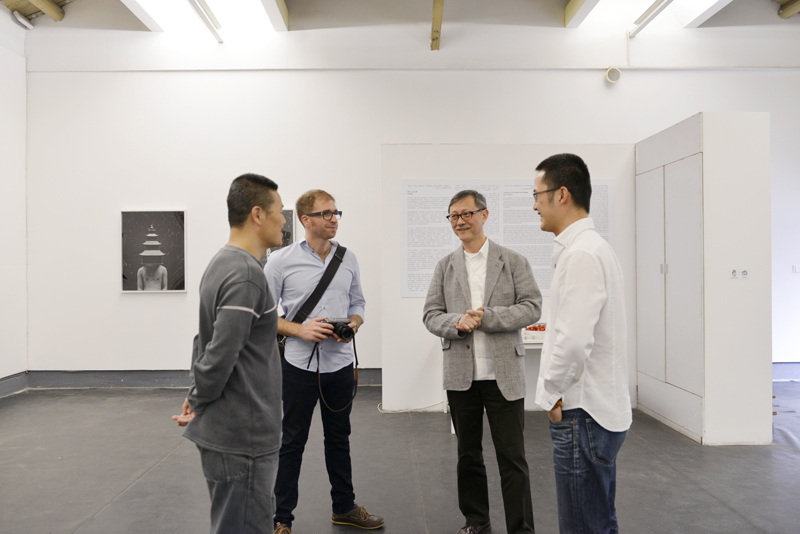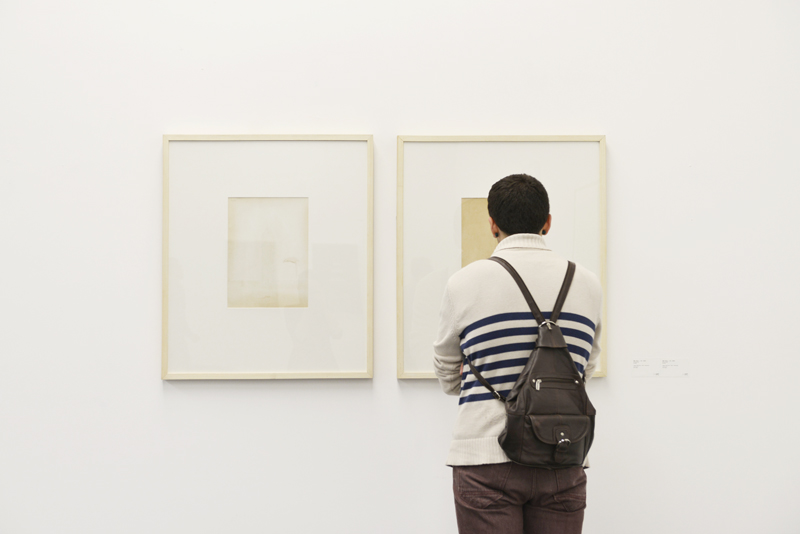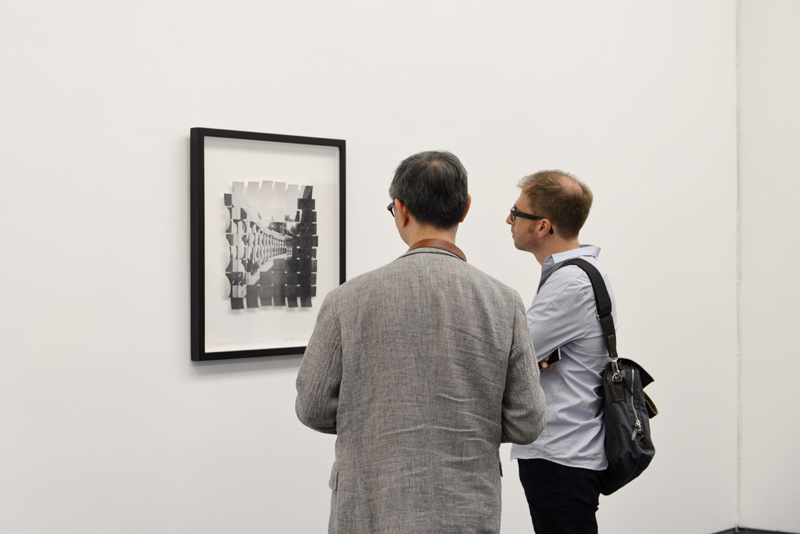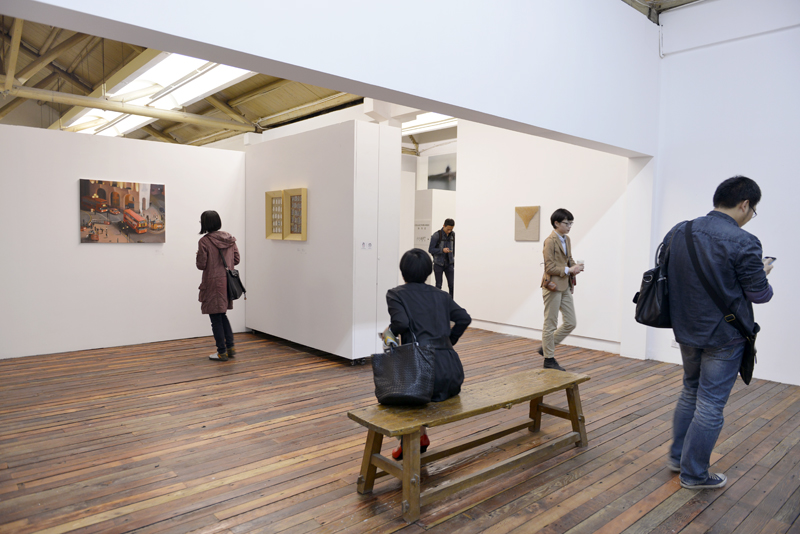Preface: “this is an expedient. You shall know that the merit at the spire of a pagoda (the nearly finished work) can not be declined.”
- Feng Menglong’s Aphoriams to Awaken the Public, Vol.7
The Merit at the Spire of a Pagoda
by Chen Haiyan
In my childhood, I can see the silhouette of a pagoda in a cold bluish gray not far away. If the weather is fine, I can see the pagoda with delicate eaves fully decorated with wind-bells across layers of roofs. The spire of gourd shape shines gloriously in the sun. Occasionally I could hear the clear sounds of the bells by the wind. But I always wondered how the big gourd was carried onto the top of the pagoda. My childhood was thus quietly past through the silent gaze and deep thought of the pagoda. This may be my very first notion about the city skylines.
The high image of the pagoda in my childhood has faded away as time passes, just like those ancient pagodas, highly standing and then collapsing, forgotten clean by history and memory. For example, the most prestigious Yongning Monastery Pagoda of the Northern Wei Dynasty stood a thousand feet high. Historical records,Temples and Monasteries in Luoyang says that the primogenitor Dharma acclaimed Yongning Monastery Pagoda as the acme of perfection. He clasped his hands and praised: the building is so wonderful that it surpasses all in the Elysium. Then the Pagoda was on fire for over three months, which shocked the whole Luoyong City. Now, there left only the ruin of its base. The past glory can be only imagined through words.
In all ages, those towers that people built with clay, wood and stone to demonstrate religious theocracy are still standing kingly throughout the world after experiencing all the vicissitudes of life. On the road, I have visited many known or unknown pagodas of different shapes: Lamaist pagoda of Sarnath in India, Mian Pagoda of Southeast Asia, White Pagoda (Lamaist Pagoda), Vajrasana Pagoda and Marnyi Stone of Tibet; in Han region, there are Pavilion Pagoda, Multi-eaved Pagoda, Attic Pagoda, Baoqie Yin Pagoda, Five-wheel Pagoda, Treasure Pagoda, Seamless-styled Pagoda, Dhvaja pagoda, Chaitya, The crossing-road Pagoda, Flower Pagoda and Drum Tower … I also visited tower-alike Pyramids of Egypt, Moslem Minarets, the tower forts on European castle walls and the Clock Tower of church; I have climbed some modern towers: the Eiffel Tower of France and the Oriental Pearl Tower in Shanghai. Of course, there are many other towers that I haven’t seen yet, such as the mysterious Mayan Pyramids and the legendary Burj Dubai Tower.
Regardless of the east and the west, people have always been trying to get rid of all shackles and motivate themselves to struggle with gravity and fly away from the earth without hesitation. As a discourse mode of mundane mighty force, tower signifies people’s pursuit and conquest of height, marking the city skyline. Every accomplishment of a construction triggers the next ambition. “Old Testament•Genesis” Chapter eleventh tells a story of the Babel tower in ancient Babylon. The whimsical human desired to build a tower to link the sky, which finally offended the God and was beaten by God’s stratagem. God disorganized human’s unified minds. Babel fell down and mentioned only in the eternal legend and paintings. This is the mythical and allegorical implication and warning. However, human was not resigned to accept the Oracle. They built spiritually the lighthouse to light up the way, just like the London Tower standing for the royal ruling and the Aziz Turk skeleton tower for the bloody militarism. Human, in an ancient Greek tragedy context, rebelled time and time again, getting rid of all force of gravity and flying towards the space.
Pagoda, in Chinese deity sense, is the symbol of theocracy kingcraft and idolatry. The sincere dervish Sakyamuni is the redeemer to save people from suffering. The Indian Pagoda, the tomb with Buddha’s Relics evolves to be Buddha’s incarnation. The eighty-four thousand Pagoda built by Asoka of ancient Indian Peacock dynasty is the start of Buddhism rise. Visiting pagoda is paying respect to Buddha - that is the divine place to pray for being detached from the world towards the west shore. During the long history, those figures that carry compassion ideal and continue to study even in old age are the devoted believers who translate, preserve and spread Buddha classics. Their translated classics are grand and brilliant. Only the translation of “pagoda” has many versions: “Stupa”, “Buddha”, “Thupo”and paraphrases such as “grave” and “circular mound”, etc. “Pagoda”, this Chinese character first appeared in Ge Hong’s Zi Yuan of the Eastern Jin Dynasty, later Xu Xuan of the Northern Song Dynasty explained in New Added Characters of Original Chinese Characters: “pagoda is the stupa of west regions.” So to speak, the new attached “pagoda” in Chinese vocabulary is “gathered merit”.
After being introduced into China, pagoda follows Buddhism in history to rise, decline, combine and evolve, and is finally grafted with Chinese architecture tradition becoming the cold and lonely Utopian Buddhist palace along with the temple. The White Horse temple ordered and built by Emperor Ming of Han Dynasty is the first Buddhist temple in China. The shape and structure is just as summarized in The Biography of Eminent Buddhists and Taoists in the History of the Wei Dynasty: “The Jiugong Pagoda system is reconstructed according to the old form of India, from one level to three, five, seven and nine.” The level of pagoda must be odd number, meaning sky or “yang”; the edge of pagoda must be even number, meaning earth or“yin”, which embodies the cosmology and philosophy that all under heaven and upon earth, high sky and thick earth, opposite and unify in Yin-yang. Levels of pavilions and layers of eaves raise the “sky” up to the vault of heaven, follows the immortal Taoist priests to “live in the building and drink amrita, and archives common language with God and harmony between man and nature. Pagoda may therefore represent the surreal free-styled architecture of China. The metaphysical space consciousness makes up the three cardinal guides and the five constant virtues of Confucianism so that the overturned-bowl tomb of ancient India which was originally similar to reproductive totem worship of earth-mother in ancient times further evolves to the conceited phallic worship of patriarchy. The outrageous power of the ascending solitary pagoda produces discourse power and rights myth, and then becomes the Buddhist instruments to strengthen justice and eliminates evil or dissident power in people’s consciousness. Later, there is another act of pragmatism and functionalism of mundane consciousness such as “geomancy tower” to conquer demons and “enemy tower” for military defense. Even when the literature fate is bad, people would use the pen-alike tower to question the heaven and call it “Wenchang tower”, “Wenbi tower” and “Wenfeng tower” to flourish culture, which has the essential common view with the western Ivory Tower. This is just like the intellectuals of the great Tang Dynasty who banquet in Qujiang after passing the imperial examinations, elegant and proud to have names inscribed on the Grand Wild Goose Pagoda, which influences late generations of intellectuals to regard all pagoda walls as paper, to venerate the burnt manuscripts in “Tower of Word”(“Tower of Word” has been built to store and burn written paper because the ancient people think the paper with word has its own life and must be respected). Together with “Tower of Gratitude”, it reflects the spreading of Confucianism.
After Buddhism spread from the east, if the context of pagoda was theocracy kingcraft and secular humanity , then it has essentially changed in China in recently years, filled with more ideology and class struggles. In the 1920s, Leifeng Pagoda collapsed. Lu Xun discussed it time after time. He regarded Leifeng Pagoda as the symbol of feudal legacy and oppression. The unforgivable White Snake Spirit who dared to cause the flooding of Jinshan Temple was suppressed and captured under Leifeng Pagoda. She was actually the victim and enlightenment who dared to resist after humanity awakened but finally self-sacrificed. And the later reproduced folktale implied such metaphor and karma in the plot that the White Snake Spirit had upgraded to human and further became immortal while Fa Hai escaped into crab belly. What’s quite interesting is the real reason of Leifeng Pagoda’s collapse: people believed that the brick of pagoda can exorcise evil spirits, have many sons and earn money by digging for Buddhist scriptures. The result was the damage of the Pagoda footing, which exactly symbolizes the believers’ nature and collective personalities. Today, the commercial consumerism wave piles and builds up many landmarks and skyscrapers called “tower” in English. They displaces Buddhist intention that “sand accumulates to form a pagoda” (“many littles make a mickle”), becomes the post-modern showy, vain and conceited totem pole, and ruthlessly break the skyline of all cultures in a visual illusion of “Leifeng Pagoda in the Sunset”.
A tower for a mountain is an assumption in geomancy, the symbol of a Holy Land , the gathering point of worship, and the origin of city development. It is always our aspiration to live with poetic flavor, ascend a height and enjoy a distant view. This group exhibition of OFOTO Gallery is the presentations of the artists’ understanding, thinking and creation of “Pagoda”. As everyone has different cognition of pagoda, now I write this essay just to restore a three-dimensional shape of that image of pagoda in my childhood memory. Interestingly, when Eiffel Tower was to build, the French society disagreed. Maupassant once spread the word: “if Eiffel tower is built in Paris, I will leave the city forever.” While when Eiffel Tower was completed, Maupassant frequently went to the top floor restaurant. Facing people’s questions, the literary giant calmly responded: “Because this is the only place in Paris that I can’t see Eiffel Tower.” I want to say that we are just a screaming baby in front of known and unknown. Nevertheless, the obsession and exploration is the spire of merit that can not be declined.
